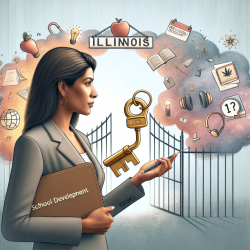As the world becomes more culturally diverse, the field of speech-language pathology (SLP) must evolve to meet the needs of a varied client base. Speech-language pathologists service a wide range of clients from different cultural and linguistic backgrounds. Therefore, SLPs should be aware of and able to adapt their own personal biases, perceptions, pragmatic behaviors, narrative styles, and teaching methods. Let's explore why cultural competence is so crucial in our field and how we can improve it.
The Growing Diversity in the United States
The United States has seen a substantial increase in cultural diversity over the years. For instance, in 2000, minorities composed approximately 30% of the population. A decade later, that number increased to 36%. By 2050, it is projected that minority populations will represent approximately 50% of the total U.S. population. This shift means that ethnically and racially diverse people may no longer be a numerical minority.
The Cultural Mismatch in SLP
Unlike the projected rate of cultural diversity in the U.S., the American Speech-Language Hearing Association (ASHA) demographics are relatively homogenous in terms of ethnicity and gender. According to a 2011 demographic profile, ASHA's members are comprised of 92.7% White, 4.4% Hispanic or Latino, 3.2% Black or African American, and smaller percentages of other ethnicities. Women represent approximately 94.5% of ASHA's members, while men represent 5.5%.
Why Cultural Competence Matters
Gaps in cultural and linguistic competency can lead to negative perceptions and attitudes towards clients, hindering the effectiveness of service delivery. Researchers have found that a lack of cultural competence and cross-cultural adaptability can diminish the effectiveness of patient outcomes and clinical service delivery. This is especially significant given that an estimated 6.2 million culturally and linguistically diverse Americans have a communication disorder.
Addressing the Issue
To address this cultural mismatch, healthcare leaders and educators must focus on improving cultural competence among SLPs. Anderson et al. (2003) suggested that the growing rate of cultural diversity has caused healthcare leaders to become more concerned due to the increased demand for more culturally competent healthcare providers.
Strategies for Improvement
Here are some strategies to improve cultural competence among SLPs:
- Training Programs: Incorporate cultural competence training into SLP educational programs.
- Workshops and Seminars: Offer ongoing professional development opportunities focused on cultural competence.
- Community Engagement: Encourage SLPs to engage with diverse communities to better understand their needs and perspectives.
- Resource Accessibility: Ensure that resources are available and accessible to all clients, regardless of their cultural or linguistic background.
Conclusion
The field of speech-language pathology must evolve to meet the needs of an increasingly diverse client base. By focusing on cultural competence, we can improve service delivery and outcomes for all clients. For more information, please follow this link.










